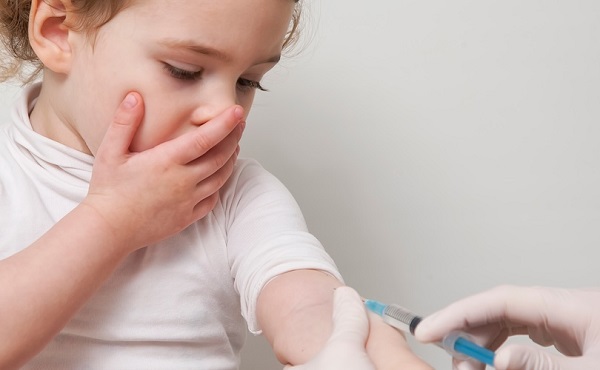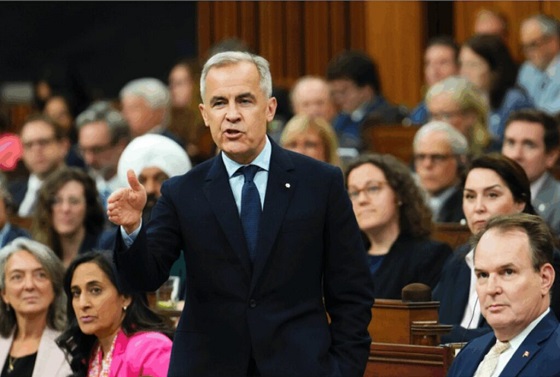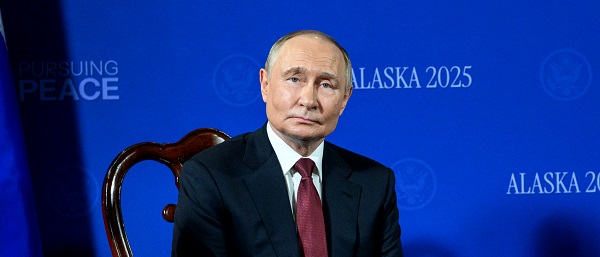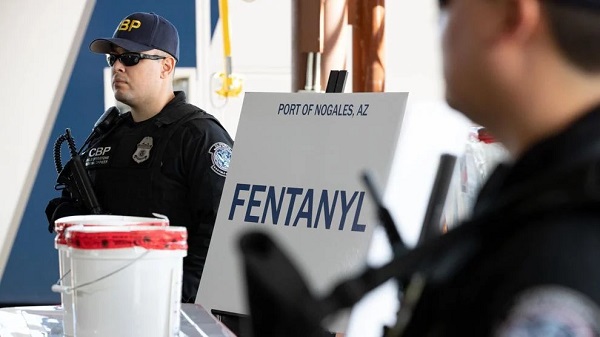Brownstone Institute
How the “Unvaccinated” Got It Right

BY
Scott Adams is the creator of the famous cartoon strip, Dilbert. It is a strip whose brilliance derives from close observation and understanding of human behavior. Some time ago, Scott turned those skills to commenting insightfully and with notable intellectual humility on the politics and culture of our country.
Like many other commentators, and based on his own analysis of evidence available to him, he opted to take the Covid “vaccine.”
Recently, however, he posted a video on the topic that has been circulating on social media. It was a mea culpa in which he declared, “The unvaccinated were the winners,” and, to his great credit, “I want to find out how so many of [my viewers] got the right answer about the “vaccine” and I didn’t.”
“Winners” was perhaps a little tongue-in-cheek: he seemingly means that the “unvaccinated” do not have to worry about the long-term consequences of having the “vaccine” in their bodies since enough data concerning the lack of safety of the “vaccines” have now appeared to demonstrate that, on the balance of risks, the choice not to be “vaccinated” has been vindicated for individuals without comorbidities.
What follows is a personal response to Scott, which explains how consideration of the information that was available at the time led one person – me – to decline the “vaccine.” It is not meant to imply that all who accepted the “vaccine” made the wrong decision or, indeed, that everyone who declined it did so for good reasons.
- Some people have said that the “vaccine” was created in a hurry. That may or may not be true. Much of the research for mRNA “vaccines” had already been done over many years, and corona-viruses as a class are well understood so it was at least feasible that only a small fraction of the “vaccine” development had been hurried.The much more important point was that the “vaccine” was rolled out without long-term testing. Therefore one of two conditions applied. Either no claim could be made with confidence about the long-term safety of the “vaccine” or there was some amazing scientific argument for a once-in-a-lifetime theoretical certainty concerning the long-term safety of this “vaccine.” The latter would be so extraordinary that it might (for all I know) even be a first in the history of medicine. If that were the case, it would have been all that was being talked about by the scientists; it was not. Therefore, the more obvious, first state of affairs, obtained: nothing could be claimed with confidence about the long-term safety of the “vaccine.”Given, then, that the long-term safety of the “vaccine” was a theoretical crapshoot, the unquantifiable long-term risk of taking it could only be justified by an extremely high certain risk of not taking it. Accordingly, a moral and scientific argument could only be made for its use by those at high risk of severe illness if exposed to COVID. Even the very earliest data immediately showed that I (and the overwhelming majority of the population) was not in the group.
The continued insistence on rolling out the “vaccine” to the entire population when the data revealed that those with no comorbidities were at low risk of severe illness or death from COVID was therefore immoral and ascientific on its face. The argument that reduced transmission from the non-vulnerable to the vulnerable as a result of mass “vaccination” could only stand if the long-term safety of the “vaccine” had been established, which it had not. Given the lack of proof of long-term safety, the mass-“vaccination” policy was clearly putting at risk young or healthy lives to save old and unhealthy ones. The policy makers did not even acknowledge this, express any concern about the grave responsibility they were taking on for knowingly putting people at risk, or indicate how they had weighed the risks before reaching their policy positions. Altogether, this was a very strong reason not to trust the policy or the people setting it.
At the very least, if the gamble with people’s health and lives represented by the coercive “vaccination” policy had been taken following an adequate cost-benefit benefit, that decision would have been a tough judgment call. Any honest presentation of it would have involved the equivocal language of risk-balancing and the public availability of information about how the risks were weighed and the decision was made. In fact, the language of policy-makers was dishonestly unequivocal and the advice they offered suggested no risk whatsoever of taking the “vaccine.” This advice was simply false (or if you prefer, misleading,) on the evidence of the time inasmuch as it was unqualified.
- Data that did not support COVID policies were actively and massively suppressed. This raised the bar of sufficient evidence for certainty that the “vaccine” was safe and efficacious. Per the foregoing, the bar was not met.
- Simple analyses of even the early available data showed that the establishment was prepared to do much more harm in terms of human rights and spending public resources to prevent a COVID death than any other kind of death. Why this disproportionality? An explanation of this overreaction was required. The kindest guess as to what was driving it was “good-old, honest panic.” But if a policy is being driven by panic, then the bar for going along with it moves up even higher. A less kind guess is that there were undeclared reasons for the policy, in which case, obviously, the “vaccine” could not be trusted.
- Fear had clearly generated a health panic and a moral panic, or mass formation psychosis. That brought into play many very strong cognitive biases and natural human tendencies against rationality and proportionality. Evidence of those biases was everywhere; it included the severing of close kin and kith relationships, the ill-treatment of people by others who used to be perfectly decent, the willingness of parents to cause developmental harm to their children, calls for large-scale rights violations that were made by large numbers of citizens of previously free countries without any apparent concern for the horrific implications of those calls, and the straight-faced, even anxious, compliance with policies that should have warranted responses of laughter from psychologically healthy individuals (even if they had been necessary or just helpful). In the grip of such panic or mass formation psychosis the evidential bar for extreme claims (such as the safety and moral necessity of injecting oneself with a form of gene therapy that has not undergone long-term testing) rises yet further.
- The companies responsible for manufacturing and ultimately profiting from the “vaccination” were given legal immunity. Why would a government do that if it really believed that the “vaccine” was safe and wanted to instill confidence in it? And why would I put something in my body that the government has decided can harm me without my having any legal redress?
- If the “vaccine”-sceptical were wrong, there would still have been two good reasons not to suppress their data or views. First, we are a liberal democracy that values free speech as a fundamental right and second, their data and arguments could be shown to be fallacious. The fact that the powers-that-be decided to violate our fundamental values and suppress discussion invites the question of “Why?” That was not satisfactorily answered beyond, “It’s easier for them to impose their mandates in a world where people do not dissent:” but that is an argument against compliance, rather than for it. Suppressing information a priori suggests that the information has persuasive force. I distrust anyone who distrusts me to determine which information and arguments are good and which are bad when it is my health that is at stake – especially when the people who are promoting censorship are hypocritically acting against their declared beliefs in informed consent and bodily autonomy.
- The PCR test was held up as the “gold standard” diagnostic test for COVID. A moment’s reading about how the PCR test works indicates that it is no such thing. Its use for diagnostic purposes is more of an art than a science, to put it kindly. Kary Mullis, who in 1993 won the Nobel Prize in Chemistry for inventing the PCR technique risked his career to say as much when people tried to use it as a diagnostic test for HIV to justify a mass program of pushing experimental anti-retroviral drugs on early AIDS patients, which ultimately killed tens of thousands of people. This raises the question, “How do the people who are generating the data that we saw on the news every night and were being used to justify the mass “vaccination” policy handle the uncertainty around PCR-based diagnoses?” If you don’t have a satisfactory answer to this question, your bar for taking the risk of “vaccination” should once again go up. (On a personal note, to get the answer before making my decision about whether to undergo “vaccination,” I sent exactly this question, via a friend, to an epidemiologist at Johns Hopkins. That epidemiologist, who was personally involved in generating the up-to-date data on the spread of pandemic globally, replied merely that s/he works with the data s/he’s given and does not question its accuracy or means of generation. In other words, the pandemic response was largely based on data generated by processes that were not understood or even questioned by the generators of that data.)
- To generalize the last point, a supposedly conclusive claim by someone who demonstrably cannot justify their claim should be discounted. In the case of the COVID pandemic, almost all people who acted as if the “vaccine” was safe and effective had no physical or informational evidence for the claims of safety and efficacy beyond the supposed authority of other people who made them. This includes many medical professionals – a problem that was being raised by some of their number (who, in many cases, were censored on social media and even lost their jobs or licenses). Anyone could read the CDC infographics on mRNA “vaccines” and, without being a scientist, generate obvious “But what if..?” questions that could be asked of experts to check for themselves whether the pushers of the “vaccines” would personally vouch for their safety. For example, the CDC put out an infographic that stated the following.“How does the vaccine work?The mRNA in the vaccine teaches your cells how to make copies of the spike protein. If you are exposed to the real virus later, your body will recognize it and know how to fight it off. After the mRNA delivers the instructions, your cells break it down and get rid of it.”
All right. Here are some obvious questions to ask, then. “What happens if the instructions delivered to cells to generate the spike protein are not eliminated from the body as intended? How can we be sure that such a situation will never arise?” If someone cannot answer those questions, and he is in a position of political or medical authority, then he shows himself to be willing to push potentially harmful policies without considering the risks involved.
- Given all of the above, a serious person at least had to keep an eye out for published safety and efficacy data as the pandemic proceeded. Pfizer’s Six-month Safety and Efficacy Study was notable. The very large number of its authors was remarkable and their summary claim was that the tested vaccine was effective and safe. The data in the paper showed more deaths per head in the “vaccinated” group than “unvaccinated” group.

While this difference does not statistically establish that the shot is dangerous or ineffective, the generated data were clearly compatible with (let us put it kindly) the incomplete safety of the “vaccine” – at odds with the front-page summary. (It’s almost as if even professional scientists and clinicians exhibit bias and motivated reasoning when their work becomes politicized.) At the very least, a lay reader could see that the “summary findings” stretched, or at least showed a remarkable lack of curiosity about, the data – especially given what was at stake and the awesome responsibility of getting someone to put something untested inside their body.
- As time went on, it became very clear that some of the informational claims that had been made to convince people to get “vaccinated,” especially by politicians and media commentators, were false. If those policies had been genuinely justified by the previously claimed “facts,” then determination of the falsity of those “facts” should have resulted in a change in policy or, at the very least, expressions of clarification and regret by people who had previously made those incorrect but pivotal claims. Basic moral and scientific standards demand that individuals put clearly on the record the requisite corrections and retractions of statements that might influence decisions that affect health. If they don’t, they should not be trusted – especially given the huge potential consequences of their informational errors for an increasingly “vaccinated” population. That, however, never happened. If the “vaccine”-pushers had acted in good faith, then in the wake of the publication of new data throughout the pandemic, we would have been hearing (and perhaps even accepting) multiple mea culpas. We heard no such thing from political officials, revealing an almost across-the-board lack of integrity, moral seriousness, or concern with accuracy. The consequently necessary discounting of the claims previously made by officials left no trustworthy case on the pro-lockdown, pro-“vaccine” side at all.To offer some examples of statements that were proven false by data but not explicitly walked back:“You’re not going to get COVID if you get these vaccinations… We are in a pandemic of the unvaccinated.” – Joe Biden;
“The vaccines are safe. I promise you…” – Joe Biden;
“The vaccines are safe and effective.” – Anthony Fauci.
“Our data from the CDC suggest that vaccinated people do not carry the virus, do not get sick – and it’s not just in the clinical trials but it’s also in real world data.” – Dr. Rochelle Walensky.
“We have over 100,000 children, which we’ve never had before, in… in serious condition and many on ventilators.” – Justice Sotomayer (during a case to determine legality of Federal “vaccine” mandates)…
… and so on and so on.
The last one is particularly interesting because it was made by a judge in a Supreme Court case to determine the legality of the federal mandates. Subsequently, the aforementioned Dr. Walensky, head of the CDC, who had previously made a false statement about the efficacy of the “vaccine,” confirmed under questioning that the number of children in hospital was only 3,500 – not 100,000.
To make more strongly the point about prior claims and policies’ being contradicted by subsequent findings but not, as a result, being reversed, the same Dr. Walensky, head of the CDC, said, “the overwhelming number of deaths – over 75% – occurred in people that had at least four comorbidities. So really these were people who were unwell to begin with.” That statement so completely undermined the entire justification for the policies of mass-“vaccination” and lockdowns that any intellectually honest person who supported them would at that point have to reassess their position. Whereas the average Joe might well have missed that piece of information from the CDC, it was the government’s own information so the presidential Joe (and his agents) certainly could not have missed it. Where was the sea change in policy to match the sea change in our understanding of the risks associated with COVID, and therefore the cost-benefit balance of the untested (long-term) “vaccine” vs. the risk associated with being infected with COVID? It never came. Clearly, neither the policy positions nor their supposed factual basis could be trusted.
- What was the new science that explained why, for the first time in history, a “vaccine” would be more effective than natural exposure and consequent immunity? Why the urgency to get a person who has had COVID and now has some immunity to get “vaccinated” after the fact?
- The overall political and cultural context in which the entire discourse on “vaccination” was being conducted was such that the evidential bar for the safety and efficacy of the “vaccine” was raised yet further while our ability to determine whether that bar had been met was reduced. Any conversation with an “unvaccinated” person (and as an educator and teacher, I was involved in very many), always involved the “unvaccinated” person being put into a defensive posture of having to justify himself to the “vaccine”-supporter as if his position was de facto more harmful than the contrary one. In such a context, accurate determination of facts is almost impossible: moral judgment always inhibits objective empirical analysis. When dispassionate discussion of an issue is impossible because judgment has saturated discourse, drawing conclusions of sufficient accuracy and with sufficient certainty to promote rights violations and the coercion of medical treatment, is next to impossible.
- Regarding analytics (and Scott’s point about “our” heuristics beating “their” analytics), precision is not accuracy. Indeed, in contexts of great uncertainty and complexity, precision is negatively correlated with accuracy. (A more precise claim is less likely to be correct.) Much of the COVID panic began with modeling. Modeling is dangerous inasmuch as it puts numbers on things; numbers are precise; and precision gives an illusion of accuracy – but under great uncertainty and complexity, model outputs are dominated by the uncertainties on the input variables that have very wide (and unknown) ranges and the multiple assumptions that themselves warrant only low confidence. Therefore, any claimed precision of a model’s output is bogus and the apparent accuracy is only and entirely that – apparent.
We saw the same thing with HIV in the ‘80s and ‘90s. Models at that time determined that up to one-third of the heterosexual population could contract HIV. Oprah Winfrey offered that statistic on one of her shows, alarming a nation. The first industry to know that this was absurdly wide of the mark was the insurance industry when all of the bankruptcies that they were expecting on account of payouts on life insurance policies did not happen. When the reality did not match the outputs of their models, they knew that the assumptions on which those models were based were false – and that the pattern of the disease was very different from what had been declared.
For reasons beyond the scope of this article, the falseness of those assumptions could have been determined at the time. Of relevance to us today, however, is the fact that those models helped to create an entire AIDS industry, which pushed experimental antiretroviral drugs on people with HIV no doubt in the sincere belief that the drugs might help them. Those drugs killed hundreds of thousands of people.
(By the way, the man who announced the “discovery” of HIV from the White House – not in a peer-reviewed journal – and then pioneered the huge and deadly reaction to it was the very same Anthony Fauci who has been gracing our television screens over the last few years.)
- An honest approach to data on COVID and policy development would have driven the urgent development of a system to collect accurate data on COVID infections and the outcomes of COVID patients. Instead, the powers that be did the very opposite, making policy decisions that knowingly reduced the accuracy of collected data in a way that would serve their political purposes. Specifically, they 1) stopped distinguishing between dying of COVID and dying with COVID and 2) incentivized medical institutions to identify deaths as caused by COVID when there was no clinical data to support that conclusion. (This also happened during the aforementioned HIV panic three decades ago.)
- The dishonesty of the pro-“vaccine” side was revealed by the repeated changes of official definitions of clinical terms like “vaccine” whose (scientific) definitions have been fixed for generations (as they must be if science is to do its work accurately: definitions of scientific terms can change, but only when our understanding of their referents changes). Why was the government changing the meanings of words rather than simply telling the truth using the same words they had been using from the beginning? Their actions in this regard were entirely disingenuous and anti-science. The evidential bar moves up again and our ability to trust the evidence slides down.
In his video (which I mentioned at the top of this article), Scott Adams asked, “How could I have determined that the data that [“vaccine”-sceptics] sent me was the good data?” He did not have to. Those of us who got it right or “won” (to use his word) needed only to accept the data of those who were pushing the “vaccination” mandates. Since they had the greatest interest in the data pointing their way, we could put an upper bound of confidence in their claims by testing those claims against their own data. For someone without comorbidities, that upper bound was still too low to take the risk of “vaccination” given the very low risk of severe harm from contracting COVID-19.
In this relation, it is also worth mentioning that under the right contextual conditions, absence of evidence is evidence of absence. Those conditions definitely applied in the pandemic: there was a massive incentive for all of the outlets who were pushing the “vaccine” to provide sufficient evidence to support their unequivocal claims for the vaccine and lockdown policies and to denigrate, as they did, those who disagreed. They simply did not provide that evidence, obviously because it did not exist. Given that they would have provided it if it had existed, the lack of evidence presented was evidence of its absence.
For all of the above reasons, I moved from initially considering enrolling in a vaccine trial to doing some open-minded due diligence to becoming COVID-“vaccine”-sceptical. I generally believe in never saying “never” so I was waiting until such time as the questions and issues raised above were answered and resolved. Then, I would be potentially willing to get “vaccinated,” at least in principle. Fortunately, not subjecting oneself to a treatment leaves one with the option to do so in the future. (Since the reverse is not the case, by the way, the option value of “not acting yet” weighs somewhat in favor of the cautious approach.)
However, I remember the day when my decision not to take the “vaccine” became a firm one. A conclusive point brought me to deciding that I would not be taking the “vaccine” under prevailing conditions. A few days later, I told my mother on a phone call, “They will have to strap me to a table.”
- Whatever the risks associated with a COVID infection on the one hand, and the “vaccine” on the other, the “vaccination” policy enabled massive human rights violations. Those who were “vaccinated” were happy to see the “unvaccinated” have basic freedoms removed (the freedom to speak freely, work, travel, be with loved ones at important moments such as births, deaths, funerals etc.) because their status as “vaccinated” allowed them to accept back as privileges-for-the-“vaccinated” the rights that had been removed from everyone else. Indeed, many people grudgingly admitted that they got “vaccinated” for that very reason, e.g. to keep their job or go out with their friends. For me, that would have been to be complicit in the destruction, by precedent and participation, of the most basic rights on which our peaceful society depends.People have died to secure those rights for me and my compatriots. As a teenager, my Austrian grandfather fled to England from Vienna and promptly joined Churchill’s army to defeat Hitler. Hitler was the man who murdered his father, my great-grandfather, in Dachau for being a Jew. The camps began as a way to quarantine the Jews who were regarded as vectors of disease that had to have their rights removed for the protection of the wider population. In 2020, all I had to do in defense of such rights was to put up with limited travel and being barred from my favorite restaurants, etc., for a few months.
Even if I were some weird statistical outlier such that COVID might hospitalize me despite my age and good health, then so be it: if it were going to take me, I would not let it take my principles and rights in the meanwhile.
And what if I were wrong? What if the massive abrogation of rights that was the response of governments around the world to a pandemic with a tiny fatality rate among those who were not “unwell to begin with” (to use the expression of the Director of the CDC) was not going to end in a few months?
What if it were going to go on forever? In that case, the risk to my life from COVID would be nothing next to the risk to all of our lives as we take to the streets in the last, desperate hope of wresting back the most basic freedoms of all from a State that has long forgotten that it legitimately exists only to protect them and, instead, sees them now as inconvenient obstacles to be worked around or even destroyed.
Brownstone Institute
The Unmasking of Vaccine Science

From the Brownstone Institute
By
I recently purchased Aaron Siri’s new book Vaccines, Amen. As I flipped though the pages, I noticed a section devoted to his now-famous deposition of Dr Stanley Plotkin, the “godfather” of vaccines.
I’d seen viral clips circulating on social media, but I had never taken the time to read the full transcript — until now.
Siri’s interrogation was methodical and unflinching…a masterclass in extracting uncomfortable truths.
A Legal Showdown
In January 2018, Dr Stanley Plotkin, a towering figure in immunology and co-developer of the rubella vaccine, was deposed under oath in Pennsylvania by attorney Aaron Siri.
The case stemmed from a custody dispute in Michigan, where divorced parents disagreed over whether their daughter should be vaccinated. Plotkin had agreed to testify in support of vaccination on behalf of the father.
What followed over the next nine hours, captured in a 400-page transcript, was extraordinary.
Plotkin’s testimony revealed ethical blind spots, scientific hubris, and a troubling indifference to vaccine safety data.
He mocked religious objectors, defended experiments on mentally disabled children, and dismissed glaring weaknesses in vaccine surveillance systems.
A System Built on Conflicts
From the outset, Plotkin admitted to a web of industry entanglements.
He confirmed receiving payments from Merck, Sanofi, GSK, Pfizer, and several biotech firms. These were not occasional consultancies but long-standing financial relationships with the very manufacturers of the vaccines he promoted.
Plotkin appeared taken aback when Siri questioned his financial windfall from royalties on products like RotaTeq, and expressed surprise at the “tone” of the deposition.
Siri pressed on: “You didn’t anticipate that your financial dealings with those companies would be relevant?”
Plotkin replied: “I guess, no, I did not perceive that that was relevant to my opinion as to whether a child should receive vaccines.”
The man entrusted with shaping national vaccine policy had a direct financial stake in its expansion, yet he brushed it aside as irrelevant.
Contempt for Religious Dissent
Siri questioned Plotkin on his past statements, including one in which he described vaccine critics as “religious zealots who believe that the will of God includes death and disease.”
Siri asked whether he stood by that statement. Plotkin replied emphatically, “I absolutely do.”
Plotkin was not interested in ethical pluralism or accommodating divergent moral frameworks. For him, public health was a war, and religious objectors were the enemy.
He also admitted to using human foetal cells in vaccine production — specifically WI-38, a cell line derived from an aborted foetus at three months’ gestation.
Siri asked if Plotkin had authored papers involving dozens of abortions for tissue collection. Plotkin shrugged: “I don’t remember the exact number…but quite a few.”
Plotkin regarded this as a scientific necessity, though for many people — including Catholics and Orthodox Jews — it remains a profound moral concern.
Rather than acknowledging such sensitivities, Plotkin dismissed them outright, rejecting the idea that faith-based values should influence public health policy.
That kind of absolutism, where scientific aims override moral boundaries, has since drawn criticism from ethicists and public health leaders alike.
As NIH director Jay Bhattacharya later observed during his 2025 Senate confirmation hearing, such absolutism erodes trust.
“In public health, we need to make sure the products of science are ethically acceptable to everybody,” he said. “Having alternatives that are not ethically conflicted with foetal cell lines is not just an ethical issue — it’s a public health issue.”
Safety Assumed, Not Proven
When the discussion turned to safety, Siri asked, “Are you aware of any study that compares vaccinated children to completely unvaccinated children?”
Plotkin replied that he was “not aware of well-controlled studies.”
Asked why no placebo-controlled trials had been conducted on routine childhood vaccines such as hepatitis B, Plotkin said such trials would be “ethically difficult.”
That rationale, Siri noted, creates a scientific blind spot. If trials are deemed too unethical to conduct, then gold-standard safety data — the kind required for other pharmaceuticals — simply do not exist for the full childhood vaccine schedule.
Siri pointed to one example: Merck’s hepatitis B vaccine, administered to newborns. The company had only monitored participants for adverse events for five days after injection.
Plotkin didn’t dispute it. “Five days is certainly short for follow-up,” he admitted, but claimed that “most serious events” would occur within that time frame.
Siri challenged the idea that such a narrow window could capture meaningful safety data — especially when autoimmune or neurodevelopmental effects could take weeks or months to emerge.
Siri pushed on. He asked Plotkin if the DTaP and Tdap vaccines — for diphtheria, tetanus and pertussis — could cause autism.
“I feel confident they do not,” Plotkin replied.
But when shown the Institute of Medicine’s 2011 report, which found the evidence “inadequate to accept or reject” a causal link between DTaP and autism, Plotkin countered, “Yes, but the point is that there were no studies showing that it does cause autism.”
In that moment, Plotkin embraced a fallacy: treating the absence of evidence as evidence of absence.
“You’re making assumptions, Dr Plotkin,” Siri challenged. “It would be a bit premature to make the unequivocal, sweeping statement that vaccines do not cause autism, correct?”
Plotkin relented. “As a scientist, I would say that I do not have evidence one way or the other.”
The MMR
The deposition also exposed the fragile foundations of the measles, mumps, and rubella (MMR) vaccine.
When Siri asked for evidence of randomised, placebo-controlled trials conducted before MMR’s licensing, Plotkin pushed back: “To say that it hasn’t been tested is absolute nonsense,” he said, claiming it had been studied “extensively.”
Pressed to cite a specific trial, Plotkin couldn’t name one. Instead, he gestured to his own 1,800-page textbook: “You can find them in this book, if you wish.”
Siri replied that he wanted an actual peer-reviewed study, not a reference to Plotkin’s own book. “So you’re not willing to provide them?” he asked. “You want us to just take your word for it?”
Plotkin became visibly frustrated.
Eventually, he conceded there wasn’t a single randomised, placebo-controlled trial. “I don’t remember there being a control group for the studies, I’m recalling,” he said.
The exchange foreshadowed a broader shift in public discourse, highlighting long-standing concerns that some combination vaccines were effectively grandfathered into the schedule without adequate safety testing.
In September this year, President Trump called for the MMR vaccine to be broken up into three separate injections.
The proposal echoed a view that Andrew Wakefield had voiced decades earlier — namely, that combining all three viruses into a single shot might pose greater risk than spacing them out.
Wakefield was vilified and struck from the medical register. But now, that same question — once branded as dangerous misinformation — is set to be re-examined by the CDC’s new vaccine advisory committee, chaired by Martin Kulldorff.
The Aluminium Adjuvant Blind Spot
Siri next turned to aluminium adjuvants — the immune-activating agents used in many childhood vaccines.
When asked whether studies had compared animals injected with aluminium to those given saline, Plotkin conceded that research on their safety was limited.
Siri pressed further, asking if aluminium injected into the body could travel to the brain. Plotkin replied, “I have not seen such studies, no, or not read such studies.”
When presented with a series of papers showing that aluminium can migrate to the brain, Plotkin admitted he had not studied the issue himself, acknowledging that there were experiments “suggesting that that is possible.”
Asked whether aluminium might disrupt neurological development in children, Plotkin stated, “I’m not aware that there is evidence that aluminum disrupts the developmental processes in susceptible children.”
Taken together, these exchanges revealed a striking gap in the evidence base.
Compounds such as aluminium hydroxide and aluminium phosphate have been injected into babies for decades, yet no rigorous studies have ever evaluated their neurotoxicity against an inert placebo.
This issue returned to the spotlight in September 2025, when President Trump pledged to remove aluminium from vaccines, and world-leading researcher Dr Christopher Exley renewed calls for its complete reassessment.
A Broken Safety Net
Siri then turned to the reliability of the Vaccine Adverse Event Reporting System (VAERS) — the primary mechanism for collecting reports of vaccine-related injuries in the United States.
Did Plotkin believe most adverse events were captured in this database?
“I think…probably most are reported,” he replied.
But Siri showed him a government-commissioned study by Harvard Pilgrim, which found that fewer than 1% of vaccine adverse events are reported to VAERS.
“Yes,” Plotkin said, backtracking. “I don’t really put much faith into the VAERS system…”
Yet this is the same database officials routinely cite to claim that “vaccines are safe.”
Ironically, Plotkin himself recently co-authored a provocative editorial in the New England Journal of Medicine, conceding that vaccine safety monitoring remains grossly “inadequate.”
Experimenting on the Vulnerable
Perhaps the most chilling part of the deposition concerned Plotkin’s history of human experimentation.
“Have you ever used orphans to study an experimental vaccine?” Siri asked.
“Yes,” Plotkin replied.
“Have you ever used the mentally handicapped to study an experimental vaccine?” Siri asked.
“I don’t recollect…I wouldn’t deny that I may have done so,” Plotkin replied.
Siri cited a study conducted by Plotkin in which he had administered experimental rubella vaccines to institutionalised children who were “mentally retarded.”
Plotkin stated flippantly, “Okay well, in that case…that’s what I did.”
There was no apology, no sign of ethical reflection — just matter-of-fact acceptance.
Siri wasn’t done.
He asked if Plotkin had argued that it was better to test on those “who are human in form but not in social potential” rather than on healthy children.
Plotkin admitted to writing it.
Siri established that Plotkin had also conducted vaccine research on the babies of imprisoned mothers, and on colonised African populations.
Plotkin appeared to suggest that the scientific value of such studies outweighed the ethical lapses—an attitude that many would interpret as the classic ‘ends justify the means’ rationale.
But that logic fails the most basic test of informed consent. Siri asked whether consent had been obtained in these cases.
“I don’t remember…but I assume it was,” Plotkin said.
Assume?
This was post-Nuremberg research. And the leading vaccine developer in America couldn’t say for sure whether he had properly informed the people he experimented on.
In any other field of medicine, such lapses would be disqualifying.
A Casual Dismissal of Parental Rights
Plotkin’s indifference to experimenting on disabled children didn’t stop there.
Siri asked whether someone who declined a vaccine due to concerns about missing safety data should be labelled “anti-vax.”
Plotkin replied, “If they refused to be vaccinated themselves or refused to have their children vaccinated, I would call them an anti-vaccination person, yes.”
Plotkin was less concerned about adults making that choice for themselves, but he had no tolerance for parents making those choices for their own children.
“The situation for children is quite different,” said Plotkin, “because one is making a decision for somebody else and also making a decision that has important implications for public health.”
In Plotkin’s view, the state held greater authority than parents over a child’s medical decisions — even when the science was uncertain.
The Enabling of Figures Like Plotkin
The Plotkin deposition stands as a case study in how conflicts of interest, ideology, and deference to authority have corroded the scientific foundations of public health.
Plotkin is no fringe figure. He is celebrated, honoured, and revered. Yet he promotes vaccines that have never undergone true placebo-controlled testing, shrugs off the failures of post-market surveillance, and admits to experimenting on vulnerable populations.
This is not conjecture or conspiracy — it is sworn testimony from the man who helped build the modern vaccine program.
Now, as Health Secretary Robert F. Kennedy, Jr. reopens long-dismissed questions about aluminium adjuvants and the absence of long-term safety studies, Plotkin’s once-untouchable legacy is beginning to fray.
Republished from the author’s Substack
Brownstone Institute
Bizarre Decisions about Nicotine Pouches Lead to the Wrong Products on Shelves

From the Brownstone Institute
A walk through a dozen convenience stores in Montgomery County, Pennsylvania, says a lot about how US nicotine policy actually works. Only about one in eight nicotine-pouch products for sale is legal. The rest are unauthorized—but they’re not all the same. Some are brightly branded, with uncertain ingredients, not approved by any Western regulator, and clearly aimed at impulse buyers. Others—like Sweden’s NOAT—are the opposite: muted, well-made, adult-oriented, and already approved for sale in Europe.
Yet in the United States, NOAT has been told to stop selling. In September 2025, the Food and Drug Administration (FDA) issued the company a warning letter for offering nicotine pouches without marketing authorization. That might make sense if the products were dangerous, but they appear to be among the safest on the market: mild flavors, low nicotine levels, and recyclable paper packaging. In Europe, regulators consider them acceptable. In America, they’re banned. The decision looks, at best, strange—and possibly arbitrary.
What the Market Shows
My October 2025 audit was straightforward. I visited twelve stores and recorded every distinct pouch product visible for sale at the counter. If the item matched one of the twenty ZYN products that the FDA authorized in January, it was counted as legal. Everything else was counted as illegal.
Two of the stores told me they had recently received FDA letters and had already removed most illegal stock. The other ten stores were still dominated by unauthorized products—more than 93 percent of what was on display. Across all twelve locations, about 12 percent of products were legal ZYN, and about 88 percent were not.
The illegal share wasn’t uniform. Many of the unauthorized products were clearly high-nicotine imports with flashy names like Loop, Velo, and Zimo. These products may be fine, but some are probably high in contaminants, and a few often with very high nicotine levels. Others were subdued, plainly meant for adult users. NOAT was a good example of that second group: simple packaging, oat-based filler, restrained flavoring, and branding that makes no effort to look “cool.” It’s the kind of product any regulator serious about harm reduction would welcome.
Enforcement Works
To the FDA’s credit, enforcement does make a difference. The two stores that received official letters quickly pulled their illegal stock. That mirrors the agency’s broader efforts this year: new import alerts to detain unauthorized tobacco products at the border (see also Import Alert 98-06), and hundreds of warning letters to retailers, importers, and distributors.
But effective enforcement can’t solve a supply problem. The list of legal nicotine-pouch products is still extremely short—only a narrow range of ZYN items. Adults who want more variety, or stores that want to meet that demand, inevitably turn to gray-market suppliers. The more limited the legal catalog, the more the illegal market thrives.
Why the NOAT Decision Appears Bizarre
The FDA’s own actions make the situation hard to explain. In January 2025, it authorized twenty ZYN products after finding that they contained far fewer harmful chemicals than cigarettes and could help adult smokers switch. That was progress. But nine months later, the FDA has approved nothing else—while sending a warning letter to NOAT, arguably the least youth-oriented pouch line in the world.
The outcome is bad for legal sellers and public health. ZYN is legal; a handful of clearly risky, high-nicotine imports continue to circulate; and a mild, adult-market brand that meets European safety and labeling rules is banned. Officially, NOAT’s problem is procedural—it lacks a marketing order. But in practical terms, the FDA is punishing the very design choices it claims to value: simplicity, low appeal to minors, and clean ingredients.
This approach also ignores the differences in actual risk. Studies consistently show that nicotine pouches have far fewer toxins than cigarettes and far less variability than many vapes. The biggest pouch concerns are uneven nicotine levels and occasional traces of tobacco-specific nitrosamines, depending on manufacturing quality. The serious contamination issues—heavy metals and inconsistent dosage—belong mostly to disposable vapes, particularly the flood of unregulated imports from China. Treating all “unauthorized” products as equally bad blurs those distinctions and undermines proportional enforcement.
A Better Balance: Enforce Upstream, Widen the Legal Path
My small Montgomery County survey suggests a simple formula for improvement.
First, keep enforcement targeted and focused on suppliers, not just clerks. Warning letters clearly change behavior at the store level, but the biggest impact will come from auditing distributors and importers, and stopping bad shipments before they reach retail shelves.
Second, make compliance easy. A single-page list of authorized nicotine-pouch products—currently the twenty approved ZYN items—should be posted in every store and attached to distributor invoices. Point-of-sale systems can block barcodes for anything not on the list, and retailers could affirm, once a year, that they stock only approved items.
Third, widen the legal lane. The FDA launched a pilot program in September 2025 to speed review of new pouch applications. That program should spell out exactly what evidence is needed—chemical data, toxicology, nicotine release rates, and behavioral studies—and make timely decisions. If products like NOAT meet those standards, they should be authorized quickly. Legal competition among adult-oriented brands will crowd out the sketchy imports far faster than enforcement alone.
The Bottom Line
Enforcement matters, and the data show it works—where it happens. But the legal market is too narrow to protect consumers or encourage innovation. The current regime leaves a few ZYN products as lonely legal islands in a sea of gray-market pouches that range from sensible to reckless.
The FDA’s treatment of NOAT stands out as a case study in inconsistency: a quiet, adult-focused brand approved in Europe yet effectively banned in the US, while flashier and riskier options continue to slip through. That’s not a public-health victory; it’s a missed opportunity.
If the goal is to help adult smokers move to lower-risk products while keeping youth use low, the path forward is clear: enforce smartly, make compliance easy, and give good products a fair shot. Right now, we’re doing the first part well—but failing at the second and third. It’s time to fix that.
-

 Censorship Industrial Complex2 days ago
Censorship Industrial Complex2 days agoDeath by a thousand clicks – government censorship of Canada’s internet
-

 Alberta2 days ago
Alberta2 days agoSchools should go back to basics to mitigate effects of AI
-

 International2 days ago
International2 days agoAt Least 15 Killed In Shooting Targeting Jewish Community At Australia’s Bondi Beach, Police Say
-

 Daily Caller2 days ago
Daily Caller2 days agoChinese Billionaire Tried To Build US-Born Baby Empire As Overseas Elites Turn To American Surrogates
-

 Great Reset2 days ago
Great Reset2 days agoViral TikTok video shows 7-year-old cuddling great-grandfather before he’s euthanized
-

 Business2 days ago
Business2 days agoMajor tax changes in 2026: Report
-

 International2 days ago
International2 days agoRussia Now Open To Ukraine Joining EU, Officials Briefed On Peace Deal Say
-

 Crime1 day ago
Crime1 day agoTrump designates fentanyl a ‘weapon of mass destruction’





